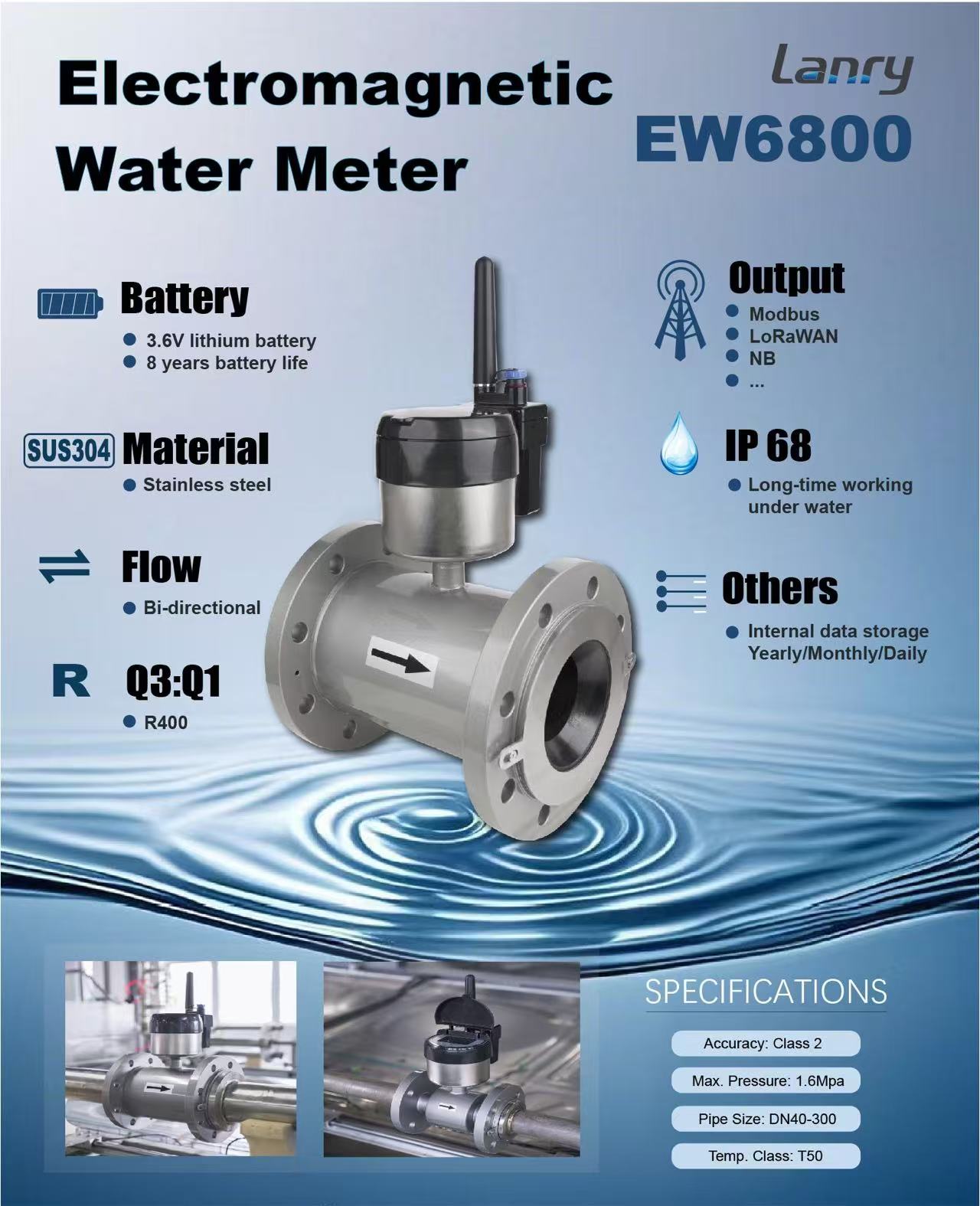In an era where water resource management demands accuracy and efficiency, electromagnetic water meters (EM meters) have emerged as a cornerstone technology for measuring water flow. Unlike traditional mechanical meters, which rely on moving parts susceptible to wear and tear, EM meters leverage the principles of electromagnetic induction to provide reliable, low-maintenance flow measurements. This makes them indispensable in municipal water supply systems, industrial processes, and environmental monitoring applications.
How Electromagnetic Water Meters Work
The operational principle of EM meters is rooted in Faraday’s Law of Electromagnetic Induction. As conductive water flows through a non-magnetic measuring tube, a magnetic field generated by coils around the tube induces an electromotive force (EMF) in the fluid. The magnitude of this EMF is directly proportional to the flow velocity, allowing the meter to calculate volume flow rates without physical obstructions. This contactless measurement method ensures minimal pressure loss and eliminates mechanical components that could degrade over time, enhancing long-term accuracy.
Key Advantages
-
High Precision and Reliability
EM meters offer exceptional measurement accuracy, typically within ±0.5% to ±1% of the flow rate, even across a wide range of velocities. Their ability to handle both low and high flow rates—from trickling streams to turbulent industrial flows—makes them versatile for diverse applications. -
Low Maintenance and Longevity
With no moving parts, EM meters are resistant to corrosion, scaling, and mechanical failure. This reduces maintenance costs and downtime, making them ideal for harsh environments such as wastewater treatment plants or chemical processing facilities. -
Adaptability to Complex Fluids
Unlike mechanical meters, which may be clogged by particulates, EM meters excel in measuring dirty water, slurries, and fluids with high solids content. The absence of internal obstructions also minimizes the risk of bacterial accumulation, ensuring compliance with hygiene standards in potable water systems. -
Smart Integration and Data Management
Modern EM meters are often equipped with digital interfaces (e.g., MODBUS, HART) that enable real-time data transmission to smart grids or supervisory control and data acquisition (SCADA) systems. This facilitates remote monitoring, leak detection, and proactive maintenance, aligning with the goals of smart city initiatives.
Applications Across Industries
- Municipal Water Systems: EM meters are widely used in water distribution networks to measure bulk flow at treatment plants, monitor consumption in residential and commercial areas, and detect leaks in pipelines.
- Industrial Processes: In manufacturing, chemical, and food industries, these meters ensure precise measurement of process water, cooling fluids, and raw material slurries, supporting quality control and resource optimization.
- Environmental Monitoring: EM meters play a critical role in measuring river flows, irrigation runoff, and stormwater drainage, aiding in flood management and ecological research.
Challenges and Innovations
While EM meters offer significant advantages, their initial cost is higher than traditional meters, which may pose a barrier for small-scale applications. However, their long-term cost-effectiveness—due to reduced maintenance and extended lifespan—often justifies the investment. Innovations in sensor technology, such as compact coil designs and energy-efficient electronics, are further driving down costs and improving usability in remote or off-grid settings.
Conclusion
Electromagnetic water meters represent a paradigm shift in flow measurement, combining scientific precision with practical durability. As the world grapples with water scarcity and the need for smarter infrastructure, these meters will continue to play a pivotal role in ensuring sustainable water management. By enabling accurate, real-time data-driven decisions, EM meters empower utilities, industries, and governments to protect this vital resource while meeting the demands of a growing global population.

Post time: Apr-25-2025

